Specifications/Technical Information
Application for evaluation machine
- FAQ
Gartner Enterprise Applications & Architecture Summit 2016
2016/03/15 (Tue)
At the Gartner Enterprise Application Architecture Summit 2016 held at Tokyo Conference Center Shinagawa on March 15, 2016 (Tuesday), Mr. Sugiura of Simplex Inc., a company that has introduced GitHub Enterprise, took the podium. . It's easy, but I'll send you a lecture report!
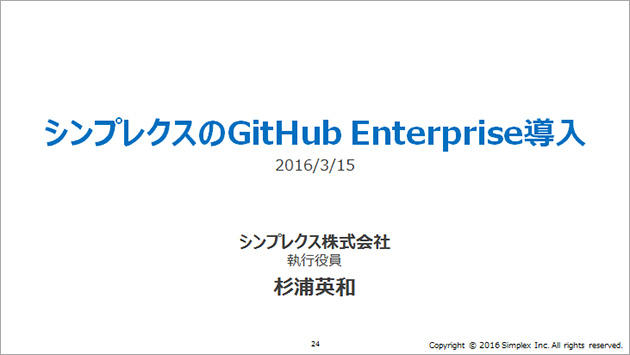
Since its establishment in 1997, Simplex Co., Ltd. (hereafter referred to as "the company") has consistently specialized in the profit business area of financial institutions, and has developed consulting and system solutions.
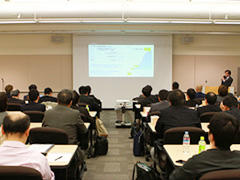
The company's solutions in the fields of trading and risk management have been adopted by most major domestic financial institutions (megabanks, major securities companies, major trust banks, major regional banks, etc.), as well as trading systems for individual investors. solutions are also widely used by Internet brokers and Internet banks.
In order to ensure the quality and reliability of mission-critical systems provided to financial institutions, the company conducts everything from consulting to development, introduction, and operation in-house. Instead of integrating third-party packages, they develop in-house solutions, do not outsource development, and do everything in-house. In addition, there are currently about 1,000 developers in the company, and it is important for employees to code themselves.
And it seems that one of the major challenges in carrying out such consistent in-house development is "how to develop efficiently."
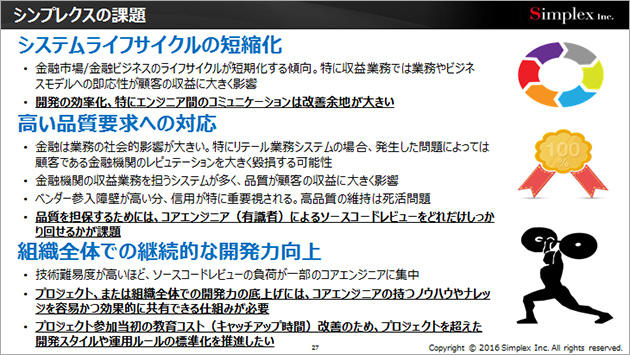
Based on the above, I was told that there are three major issues in the development environment that the company is facing.
The first is the response to the shortening of the system life cycle. In recent years, the life cycle of financial institutions providing new services to the financial market has become extremely short. For this reason, the company considers how to provide optimal solutions to customers in a short period of time as one of its important challenges.
The second is to meet high quality requirements. The company provides mission-critical systems responsible for the revenue operations of financial institutions. For this reason, he believes that the proposition “how to maintain high quality” is a very important point not only for the company but also for maintaining the competitiveness of its customers. The "quality" that the company considers includes "properly defining requirements," "designing and documenting," and "performing all tests." increase” is an important point. Because it's the artifacts based on the source code that ultimately work in production, not the documentation or test results. In order to improve the quality of the source code, the company positions reviews by so-called core engineers (the company calls them experts) as an important measure. One of the company's challenges is how well it can conduct source code reviews by experts.
The third is continuous improvement of development capabilities throughout the organization. At the company, the more technically difficult a project is, the more the burden of source code review will be concentrated on a few experts. The company's business scale is expanding rapidly, and the issue is how to create a mechanism for sharing the know-how and knowledge of experts within the company in an easy and effective way in order to raise the level of development capabilities in projects and, by extension, the entire organization. It was. Currently, the company is also focusing on standardizing development styles and operation rules that transcend project frameworks.
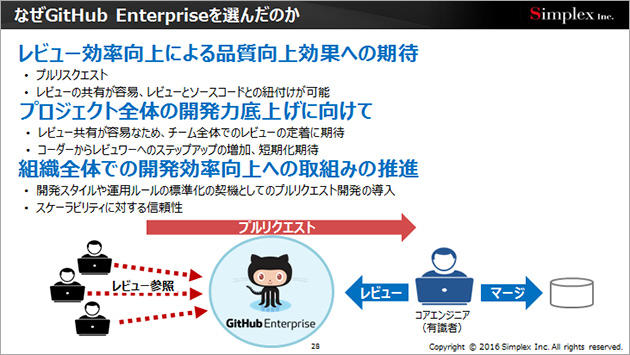
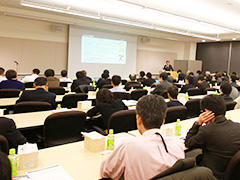
Next, he talked about why he chose and introduced GitHub Enterprise. There are three reasons.
The first is to prepare an environment in which experts can efficiently conduct source code reviews. In fact, this has been a longstanding issue for the company. Before introducing GitHub Enterprise for this issue, the company used a static analysis tool to classify source code reviews into what humans can do and what systems can do, and reduce the amount that humans have to review. was decreasing. As this tool became more popular within the company, the next step was to consider ways to streamline the source code review process, and introduced GitHub Enterprise. The most important point in the selection is the “pull request” mechanism invented by GitHub. SVN (Subversion) and CVS, which are widely used, do not have a function for conducting source code reviews in the first place. Also, when conducting source code reviews with SVN or CVS, in addition to the need to commit once, it was a bottleneck that it took time to return the source code to reject it. GitHub Enterprise allows developers to easily create branches, work on branches that do not mix with other developers' modifications, and have experts review differences in the form of pull requests. Only pull requests approved by experts can be merged into the master source code, making it more efficient. Reviews can be conducted in a natural flow provided by GitHub Enterprise, and the exchanges in reviews can be left in a searchable state as a record.
The second is the branding effect of GitHub Enterprise. GitHub is said to have a branding effect in hiring IT engineers. This seems to be due to the fact that developing on GitHub itself is recognized as a company working on advanced technology. We recognize that we can expect a branding effect because companies' efforts such as "reviewing code with the pull request function" and "improving development efficiency by introducing GitHub" are included in the search conditions of job change sites. I'm here. The company also expects the branding effect of introducing and utilizing GitHub Enterprise when considering ``how to develop excellent engineers in-house'' and ``how to hire from the outside''.
Third, we have a comprehensive support system after implementation. Since GitHub Enterprise is software developed overseas, he thought it would be difficult to install it without reliable support in Japanese. Macnica became the sole distributor of GitHub Enterprise in Japan in June 2015, so they decided to introduce it.

The company is currently using it for specific projects. Future new development projects will basically be migrated to GitHub Enterprise. From the developers who use it, "By introducing GitHub Enterprise, we were able to complete the source code review 100% even in large-scale projects," and "The process and results of the source code review by limited experts , It became possible for all project members to share on GitHub Enterprise, which led to raising the level of know-how and knowledge of each developer." We were able to promote the delegation of roles from reviewers to reviewers." It seems that the effect of introducing GitHub Enterprise was very high in this project.
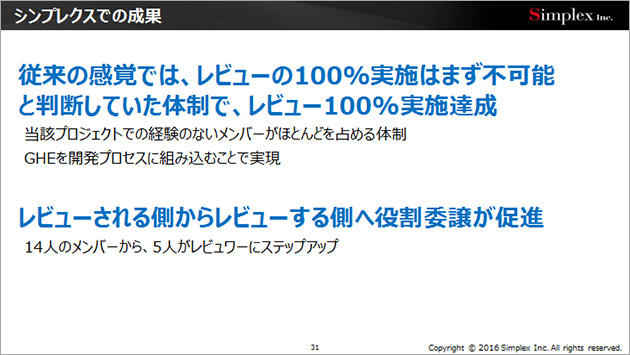
Lastly, you talked about ROI.
Mr. Sugiura said, "When preparing an environment for developers to write source code efficiently and comfortably, it is extremely difficult to make decisions based on ROI."
The company seems to have decided to introduce GitHub Enterprise without citing ROI. Also, even in projects that have achieved certain results by using GitHub Enterprise, they feel that it is difficult to quantitatively measure the cost-effectiveness after introducing the tool.
I believe that the people attending this event also understand the importance of providing a better development environment on the management side in order to raise the level of Japanese engineers. Why don't you proceed with consideration without being bound by ROI, which is difficult to quantify? I ended my lecture with this.
Mr. Sugiura, thank you very much for taking the stage. I would like to take this opportunity to thank you once again.
Feel free to contact us about GitHub Enterprise
電話でのお問い合わせ 045-476-2010
Inquiry/Document request
Macnica GitHub
- TEL:045-476-2010
- E-mail:github-rt@macnica.co.jp
Weekdays: 9:00-17:00